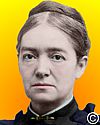
On 31 Aug 1842, Mary Corinna Putnam was born, who after marriage became known as Dr. Mary Putnam Jacobi, an American physician. She was well-respected for her medical abilities and was the first female member of the Academy of Medicine.
Jacobi was awarded Harvard University's Boylston Prize for her 1876 essay, The Question of Rest for Women during Menstruation. In this work, she refuted allegations of the physical limitations of women, such as published by Dr. Edward H. Clarke's in Sex in Education (1873). She supported her position with scientific data including sphygmographic tracings of pulse rate, force, and variations to confirm that a woman maintained vigorous health throughout her monthly cycle.
When she died, among those giving respects in memoriam was Dr William Osler. As you read his In Memoriam: Mary Putnam Jacobi, beyond the customary kindness, you can read into his remarks how the tide had turned for the acceptance and recognition of the contributions that women could and should then be able to give to science and medicine.
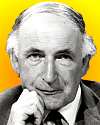
On 31 Aug 1913, Sir Bernard Lovell was born, the English radio astronomer who established and directed the Jodrell Bank Experimental Station, Cheshire, England, with (then) the world's largest steerable radiotelescope. With experience in cosmic ray research, and wartime work on radar, in 1946, he showed that radar echoes could detect optically invisible daytime meteor showers. Lovell gained funding to build the 250-ft-diam. telescope. When completed, it was able to track the first artificial satellite, Sputnik I. Today's book pick is: , by . He gives the first-hand account of the political and scientific interplay that took place in Great Britain during two critical decades in astronomy, from 1960 to 1980. The author describes the development of visionary schemes for radio telescopes of unprecedented size; the events that led to their cancellation; and how astronomers responded with alternate schemes. Any book on such an important telescope as Jodrell Bank by any author would be filled with fascinating information, but this one has the outstanding benefit of being written by the man who knows more about it that anyone, since he played such an important (and difficult) role in bringing the project to fruition.
It is available from Amazon, typically about (As of earlier time of writing - subject to change.)
 | The pursuit of the good and evil are now linked in astronomy as in almost all science. … The fate of human civilization will depend on whether the rockets of the future carry the astronomer’s telescope or a hydrogen bomb. |
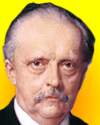 | When young Galileo, then a student at Pisa, noticed one day during divine service a chandelier swinging backwards and forwards, and convinced himself, by counting his pulse, that the duration of the oscillations was independent of the arc through which it moved, who could know that this discovery would eventually put it in our power, by means of the pendulum, to attain an accuracy in the measurement of time till then deemed impossible, and would enable the storm-tossed seaman in the most distant oceans to determine in what degree of longitude he was sailing? |
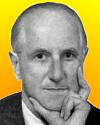 | [The unreactivity of the noble gas elements] belongs to the surest of experimental results. |
| Before you look at today's web page, see if you can answer some of these questions about the events that happened on this day. Some of the names are very familiar. Others will likely stump you. Tickle your curiosity with these questions, then check your answers on today's web page. | |
| Births | |
 | Sir Bernard Lovell, born 31 Aug 1913 is an English radio astronomer who was founder and director (1951-81) of a well-known England astronomical institution. What institution did he found? |
 | Hermann Ludwig Ferdinand von Helmholtz, born 31 Aug 1821, was a German scientist who made fundamental contributions to physiology, optics, electrodynamics, mathematics, and meteorology. He is best known for his statement of one of the fundamental laws of physics. What is this fundamental law? |
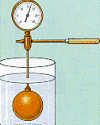 | Guillaume Amontons, born 31 Aug 1663, was a French physicist, who developed the air thermometer - which relies on increase in volume of a gas (rather than a liquid) with temperature - and used it (1702) to measure change in temperature in terms of a proportional change in pressure. He had a disability since childhood, which led him to work on inventions for people with this same disability. What was this disability? |
| Deaths | |
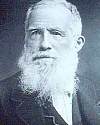 | Sir John Bennet Lawes (1814-1900) was an English agronomist who founded Rothamsted Experimental Station, the oldest agricultural research station in the world. He also founded an industry. What was the industry he founded? |
| Events | |
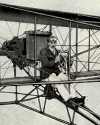 | On 31 Aug 1910, Hammond Curtiss began a biplane trip from Euclid Beach Park, Cleveland, Ohio, to Cedar Point, Sandusky, Ohio covering 70 miles in 78 minutes nonstop. What U.S. first did he establish with his flight? |
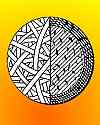 | On 31 Aug 1909, Benjamin Shibe recieved a U.S. patent for a method of making a baseball by winding soft india-rubber strands around a spherical core. (The Shibe Park stadium was named after him as the principal owner of the Philadelphia Athelics team. It later bcame the Connie Mack Stadium.) What material was used for the spherical core of Shibe's patented baseball? |
Fast answers for the previous newsletter for August 30: NOAA • ENIAC • “dirty snowball” • electron • sun.
 If you enjoy this newsletter, the website, or wish to offer encouragement or ideas, please send feedback by using your mail reader Reply button.
If you enjoy this newsletter, the website, or wish to offer encouragement or ideas, please send feedback by using your mail reader Reply button. Your click on a Facebook, StumbleUpon, or other social button on the site webpages is also a welcome sign of appreciation. Thank you for using them.
© This newsletter is copyright 2020 by todayinsci.com. Please respect the Webmaster's wishes and do not put copies online of the Newsletter — or any Today in Science History webpage. (If you already have done so, please remove them. Thank you.) Offline use in education is encouraged such as a printout on a bulletin board, or projected for classroom viewing. Online, descriptive links to our pages are welcomed, as these will provide a reader with the most recent revisions, additions and/or corrections of a webpage. For any other copyright questions, please contact the Webmaster by using your mail reader Reply button.
--
If you do not want to receive any more newsletters, Unsubscribe
To update your preferences and to unsubscribe visit this link
Executive Real Estate Business Class
-
"It was like a man with wings. It wasn't like anything you'd see on TV or in a monster movie." ...
About the publisher
Search This Blog
Blog Archive
-
▼
2020
(1542)
-
▼
August
(192)
- HISTORY: Lessons from the latest March on Washington
- New This Week on History News Network
- Discover lost cities with Nat Geo History. Subscri...
- On This Day for August 31 - Confederates evacuated...
- Newsletter for Monday 31 August.
- Face Masks Make you dumb (compliant) Economic des...
- August 31: Malaya Gains independence, Princess Dia...
- FAMILY: How to get your kid to wear a mask
- Roman numerals | Ancient empires | The battle of C...
- On This Day for August 30 - Historic spaceflight b...
- Newsletter for Sunday 30 August.
- August 30: Crossbow Outlawed, Nehru Requests Indep...
- The Compass: London
- On This Day for August 29 - New Orleans hit by Hur...
- Newsletter for Saturday 29 August.
- August 29: Treaty of Nanking, Second Battle of Bul...
- CORONAVIRUS UPDATE: These promising treatments are...
- PHOTOGRAPHY: Lives that matter, from the pietà to ...
- The Horrifying True Story Behind "Candyman," The Y...
- The Roundup Top Ten from History News Network
- On This Day for August 28 - Civil rights march on ...
- Newsletter for Friday 28 August.
- August 28: Tom Thumb Races a Horse, Scientific Ame...
- ANIMALS: When baby wombats become your roommates
- Give your kids the world! Subscribe now.
- Create remote resiliency with Britannica Kids
- On This Day for August 27 - The death of Titian, M...
- Newsletter for Thursday 27 August.
- Lockdown for you but not for the politically corre...
- August 27: Krakatoa Erupts and the End of Lord Mou...
- YOUR WEEKLY ESCAPE: Inside the world of transhuman...
- SCIENCE: Behind the hurricanes, wildfires, and bla...
- Demystified: What Does Gaslighting Mean?
- The Latest News from History News Network
- On This Day for August 26 - Joan of Arc's arrival ...
- Newsletter for Wednesday 26 August.
- Fear fatigue is more dangerous than COVID-19 plus
- August 26: Longbows, Cannons and Morris Mini-Minors
- For Your Eyes Only: America’s Spying Secrets
- 50+ Vintage Pictures Of Your Parents Being Cooler ...
- TRAVEL: Waiting for a silver lining
- On This Day for August 25 - Paris liberated, Sean ...
- Newsletter for Tuesday 25 August.
- August 25: French Arrive in Louisiana, James Cook ...
- HISTORY: Why the U.S. Postal Service matters
- Even Life-Long Learners Need Back-to-School Savings!
- Experience a 360-degree virtual tour of the Nat Ge...
- New This Week From History News Network
- On This Day for August 24 - Eruption of Mount Vesu...
- Newsletter for Monday 24 August.
- GeoEngineering Massive Drought WildFires + More Ma...
- August 24: Alaric I Sacks Rome, British Capture Wa...
- FAMILY: How you can support your kid's teachers—an...
- Genghis Khan | Edward the Confessor | The Spanish ...
- On This Day for August 23 - William Wallace execut...
- Newsletter for Sunday 23 August.
- August 23: 1st US Women's Rights Convention, Bin L...
- The Compass: U.S. National Parks
- On This Day for August 22 - Wars of the Roses ende...
- Newsletter for Saturday 22 August.
- August 22: Wars of the Roses Ends, Chennai Founded...
- CORONAVIRUS UPDATE: Your employer could require yo...
- PHOTOGRAPHY: Capturing a muted Russia
- The Unsung Heroes Who Fought For Women's Voting Ri...
- The Roundup Top Ten from History News Network
- On This Day for August 21 - French defeated at the...
- Newsletter for Friday 21 August.
- YOUR WEEKLY ESCAPE: A million people live in under...
- August 21: Mona Lisa is Stolen, the 50th US State ...
- ANIMALS: Soft and virus-y, the mink with COVID-19
- On This Day for August 20 - Viking 1 launched, Eer...
- Total Exposé! Watch the 2nd Plandemic Movie "InDoc...
- Newsletter for Thursday 20 August.
- August 20: The Dutch East India Company, Sun Yat-s...
- A Champion Will Be Crowned on 'Forged in Fire' Ton...
- SCIENCE: The robots have arrived
- The Latest News from History News Network
- On This Day for August 19 - Attempted coup against...
- Newsletter for Wednesday 19 August.
- August 19: Cease-Fire in the Iran-Iraq War and Gor...
- TRAVEL: Will new tech make flying safer now?
- Sail along with Ancient Explorers w/ Nat Geo History!
- On This Day for August 18 - Nineteenth Amendment r...
- Newsletter for Tuesday 18 August.
- August 18: Wilson's Ill-fated Neutrality, American...
- HISTORY: Breaking 'substantial barriers' with Kama...
- New This Week On History News Network
- On This Day for August 17 - Indonesia's declaratio...
- Newsletter for Monday 17 August.
- State of Tennessee orders Home visit checks on ALL...
- August 17: Division of Korea, Indonesian Independe...
- FAMILY: Preparing for this unusual school year
- Medieval baby names | Attila the Hun | Pederasty i...
- On This Day for August 16 - Leonel Fernández Reyna...
- Newsletter for Sunday 16 August.
- August 16: Deadly Chaos in Calcutta and the Last C...
- The Compass: New Zealand
- On This Day for August 15 - Independence for India...
- Newsletter for Saturday 15 August.
- August 15: The Mayflower Sets Sail, Indian Indepen...
-
▼
August
(192)
-
Blogroll
-
About
HistoryFact










0 comments:
Post a Comment